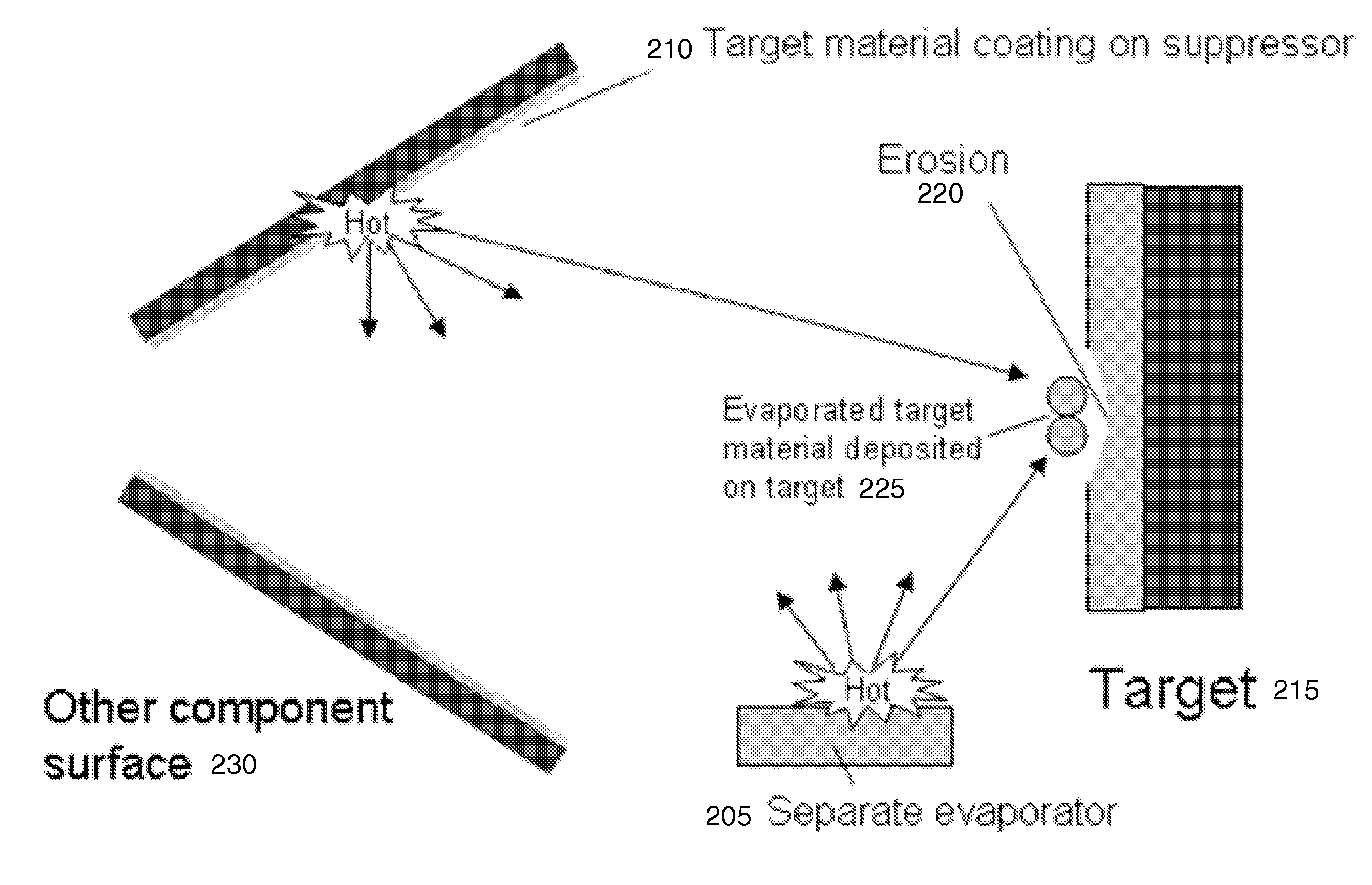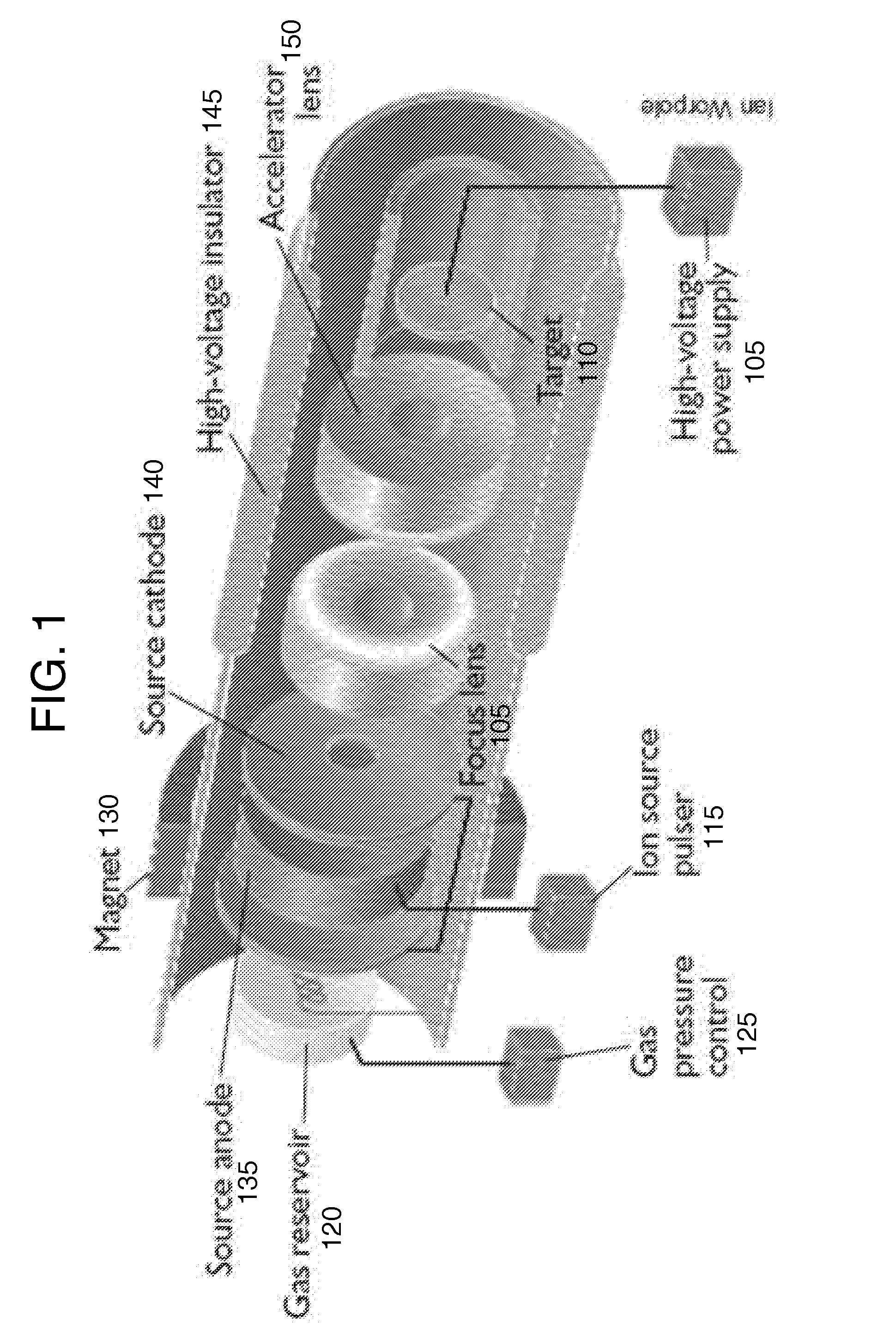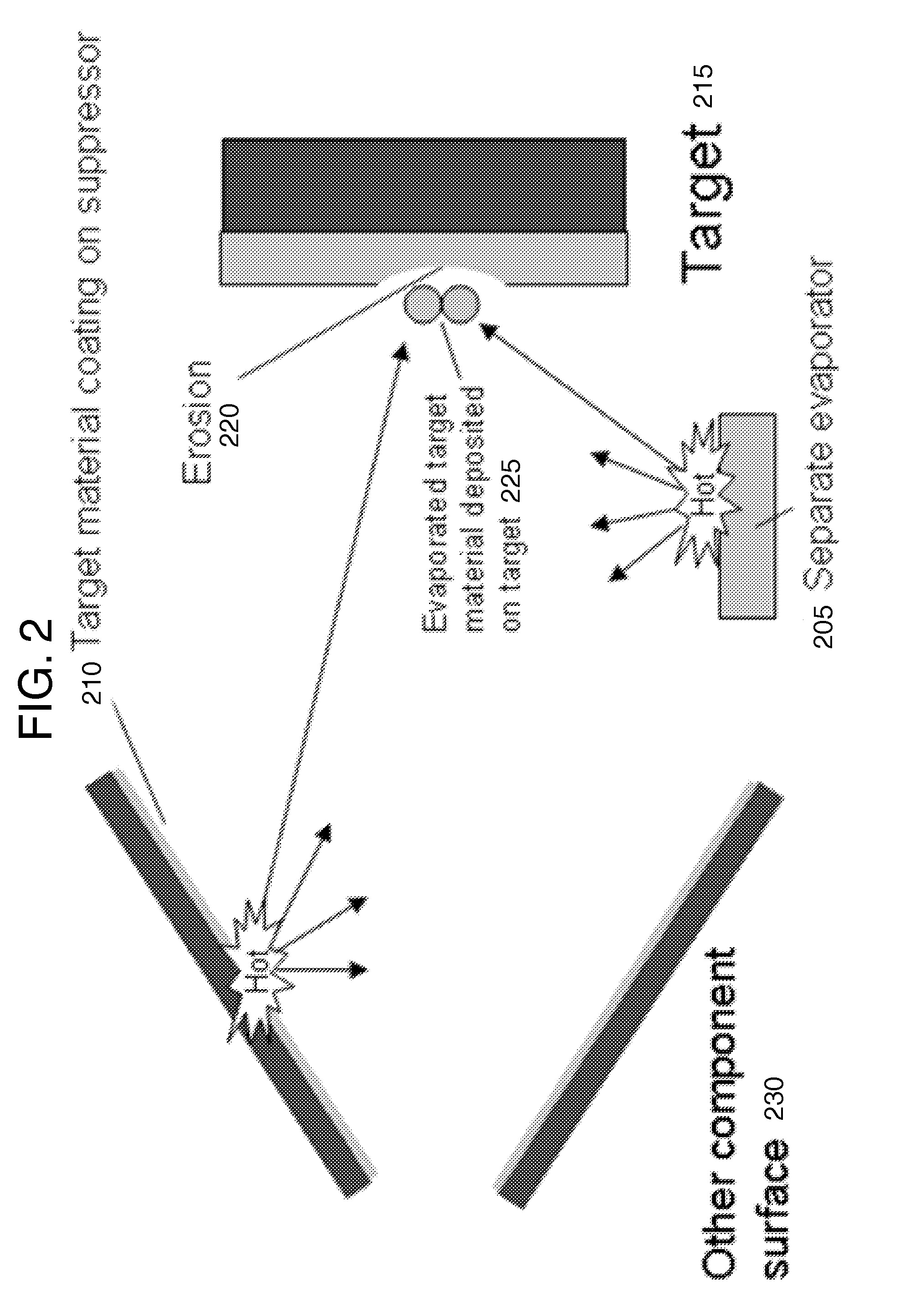Method and system for in situ depositon and regeneration of high efficiency target materials for long life nuclear reaction devices
a nuclear reaction device and high-efficiency technology, applied in the field of in situ depositon and high-efficiency target materials for long-life nuclear reaction devices, can solve the problems that the process of in situ deposition cannot nullify the lifetime or degradation effect of sputtering, and achieves good thermal conductivity, good thermal conductivity, and enhanced trapping potential
- Summary
- Abstract
- Description
- Claims
- Application Information
AI Technical Summary
Benefits of technology
Problems solved by technology
Method used
Image
Examples
embodiment 1
rons
[0156]Use of a lithium-containing target that is highly enriched in 6Li would still realize the advantages of the highly-efficient lithium target (low atomic number leads to reduced electronic stopping power, high thermal conductivity help keep it cooled when the target substrate is actively cooled, the reactions with the 6Li also produce neutrons in the 2-3 MeV range adding to the yield and neutrons generated per input energy). Furthermore, the low melting point of lithium makes it easy for the surface to be repaired after use by briefly melting the target surface to a partial or full extent. The isotopic enrichment of 6Li would further minimize the possibility of the 13 MeV neutrons otherwise produced via the D-7Li reactions.
embodiment 2
Embodiment
[0157]A preferred embodiment of the proposed system is as a replacement of radionuclide sources in existing neutron analyzer designs, especially those that rely on a small fraction of the generated neutrons to have high energy (>8 MeV) neutrons for some elements, but not so many high energy neutrons to require the substantial shielding associated with a fast neutron (e.g., D-T) source.
[0158]Certain industrial analysis applications require neutron energies exceeding 6-8 MeV for a portion of the spectrum. Typically tritium is required (for either D-T or T-T reactions) that leads to a radiological hazard and the consequent costs and restrictions (See FIG. 20). For these particular systems that require high neutron energies but must or would prefer to avoid the use of tritium for regulatory, export, safety, or cost reasons, bombarding lithium target enriched with 7Li (if necessary to go beyond the natural abundance of ˜92.5% 7Li) with high energy deuterons for D-7Li fusion tha...
PUM
| Property | Measurement | Unit |
|---|---|---|
| thickness | aaaaa | aaaaa |
| thickness | aaaaa | aaaaa |
| thermal conductivity | aaaaa | aaaaa |
Abstract
Description
Claims
Application Information
 Login to View More
Login to View More - R&D
- Intellectual Property
- Life Sciences
- Materials
- Tech Scout
- Unparalleled Data Quality
- Higher Quality Content
- 60% Fewer Hallucinations
Browse by: Latest US Patents, China's latest patents, Technical Efficacy Thesaurus, Application Domain, Technology Topic, Popular Technical Reports.
© 2025 PatSnap. All rights reserved.Legal|Privacy policy|Modern Slavery Act Transparency Statement|Sitemap|About US| Contact US: help@patsnap.com



